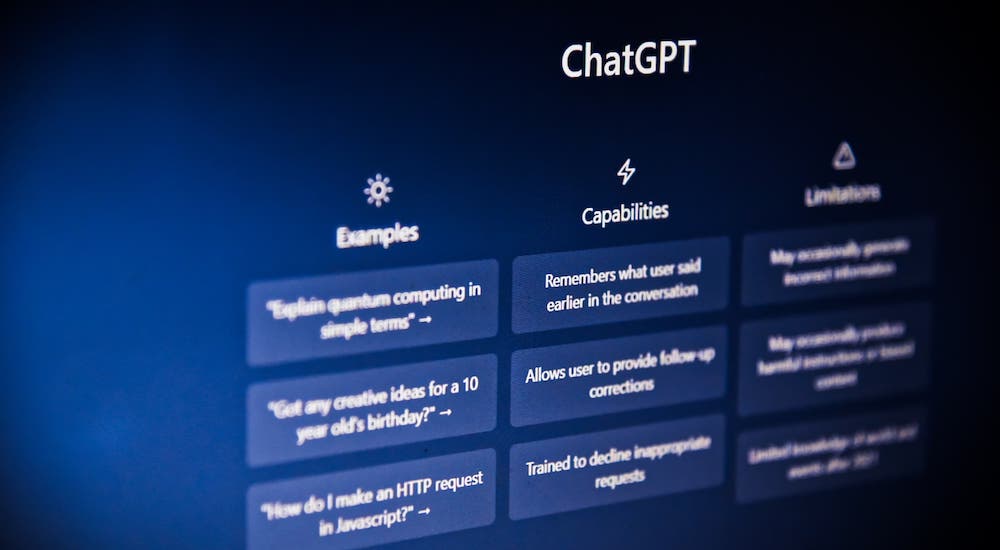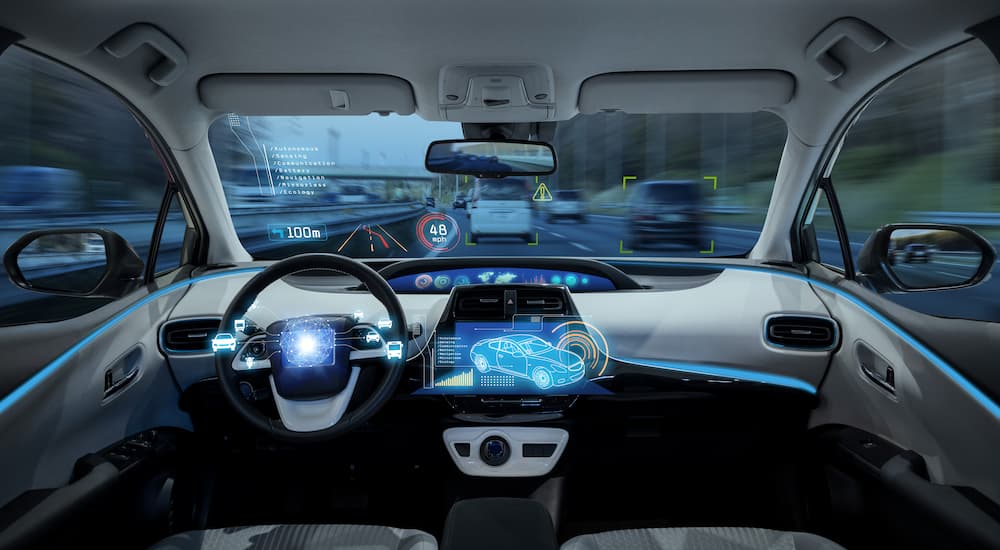Few technologies hold as much promise- or instill as much trepidation- as artificial intelligence (A.I.). Perfect for fulfilling menial tasks that would bore a human worker to tears, A.I. has the potential to transform the world we live in, and the automotive sector is no exception. From prototyping new models and training autonomous driving systems to interacting with customers and helping to forecast sales trends, A.I. has already become an important part of the automaker’s arsenal in the last couple of years.
Generative A.I. — A.I. that can produce different forms of original content based on user prompts — has been particularly successful as of late. According to a study by MarketResearch.biz, the generative AI market in the automotive industry will be worth as much as $2.105 billion by 2032, up from just $271 million today. That’s an annual growth rate of around 23 percent, which shows just how much potential the technology holds.
So, how is A.I. already being used in the industry, and what sort of role can we expect it to take in the future? There are a number of start-ups focused on these exact questions, with established automakers eagerly following any advancements that could give them an edge over their competitors. Join us as we take a closer look at the role of A.I. in today’s auto industry, check in on some forward-thinking start-ups, and explore what the future might hold.
Chatbots
When the ChatGPT chatbot was launched in late 2022, it dominated the headlines, with some calling it a job killer and others fretting over its plagiarism potential. The app’s ability to mimic conversational language might strike fear into the hearts of your average high school English teacher, but for the auto industry — and particularly dealerships — it could be a real game-changer. Being able to forge a connection with a customer is one of the easiest ways to close a sale, but that can be tough when all your sales reps are tied up, or the dealership is closed. That’s where the A.I. chatbots come in.
If you’ve been to any website selling a product or service in the last year, you’ve probably noticed that an increasing number are integrating a live chat option right on their homepage. Normally popping up from the bottom right corner, this chat box could put you in touch with a real person, but chatbots are becoming a popular alternative to traditional phone-based customer service support as they cost 15 to 30 percent less to operate. According to A.I.-powered customer service platform Tidio, 58 percent of businesses use chatbots as part of their live chat offerings. These A.I.-generated responses are usually employed to compliment, not replace, a human operator, ensuring quicker responses and driving customer engagement.
These chatbots are an ideal solution for dealership websites where buyers use the function to find the answers to specific questions, but as the A.I. becomes more refined, their role keeps expanding. The average chatbot is now “smart” enough to provide minute details on specific makes and models and can even help guide customers through the process of purchasing a vehicle. So, how have customers reacted to the rise of the machines? It’s a mixed bag. While 69 percent of shoppers said they prefer live, human-based chat to A.I. chatbots, the satisfaction rate for customers interacting with chatbots is actually two percent higher than with live chat formats. Given the low operating costs and upward trajectory of A.I. complexity, it’s hard to see A.I. chatbot-based customer service going away anytime soon.
Navigation
In-vehicle navigation has come a long way from the gazetteers and Trip Tiks of old. Today’s GPS-based vehicle navigation systems have become par for the course on most new vehicles, with our phones providing a handy alternative for those driving older models. Waze, an app-based GPS system that incorporates live, user-submitted travel times and route details, has upped the bar even further and earned a $1.3 billion acquisition by Google as a result. To some extent, A.I. has already found its way into these systems, suggesting alternative routes by weighing road closures, traffic jams, accidents, and road conditions, but it has the potential to refine the navigation experience even further as the technology becomes more complex.
Automated Driving
Autonomous driving has long been the holy grail of the auto industry, and while the technology is still in its infancy, it’s still pretty impressive. The Society of Automotive Engineers has divided autonomous driving technology into seven levels numbered zero through six, but even the most advanced, production-level vehicle on the road today is still stuck at Level 3, with Level 4 tech expected no sooner than 2030. Through the use of machine learning algorithms, computer vision, and sensor fusion techniques, A.I. has played a big role in getting autonomous driving and advanced driving assistance systems (ADAS) to where they are today.
Enabling vital safety tech, such as automatic braking, lane departure warning, and driver drowsiness detection, is just the tip of the iceberg. Apps like CarVi can monitor a driver’s skills and habits, scoring their performance and using A.I.-generated feedback to help curb less-than-ideal behavior. Nauto uses A.I. to ensure a driver pays attention throughout the ride, monitoring facial cues, eye movement, and other behaviors and issuing a warning if they detect any distraction. The app even works when the driver is wearing sunglasses and can be used without a mobile or internet connection.
Manufacturing
From concept and design to prototyping and production, A.I. is already changing how automakers approach manufacturing. The use of a “digital twin” has become an important part of the design process for most automakers, allowing engineers and designers to test out ideas in the digital realm before manifesting them in the real world. Say a designer has an idea for a new type of spoiler that will increase downforce. By feeding the design into an A.I.-based machine learning program, the team can see how the new spoiler could affect performance. This means a quicker — and cheaper — research and development process, which could well be passed on to the consumer as a lower sticker price. Digital twin technology has been used in the industry for over 20 years, but it’s becoming more complex and nuanced every day.
A.I., especially machine learning, can also be helpful when it comes to optimizing a factory or production process. A.I.-powered manufacturing management application Raven is doing just that, using real-time analytics to create some of the most efficient auto plants in the industry. Generative A.I. can even be used to design new parts, with a program spitting out unique designs that might have never crossed an engineer’s mind. The technology also has considerable potential in the quality control arena, allowing factories to detect suspect or defective parts well before they’re shipped out to the customer.
Vehicle Diagnostics and Maintenance
It’s all too easy to let vehicle maintenance fall by the wayside, but A.I. could be the solution. Packed with various sensors, computers, and gadgets, today’s vehicles are smarter than ever, but they’re not psychic. While A.I. might not be able to tell the future, it can analyze data and predict vehicle repair and maintenance issues with such accuracy that it might as well. With the ability to pour through mountains of data from various sensors and systems, A.I.-powered apps like Carfit can easily identify patterns that could indicate looming breakdowns, giving drivers a valuable heads-up before something goes wrong.
Tire pressure monitoring systems and oil change warnings represent this function in its most basic form, but ongoing advancements in A.I. could see the same warnings applied to more complex functions like battery and engine performance. Just imagine being able to spot an impending failure before it becomes the type of issue you have to deal with in the breakdown lane of a busy highway. Being able to proactively service a vehicle could turn the nightmare of the average car repair into something a little more manageable, allowing drivers to schedule their repairs around their own life and not the other way around.
Insurance
No one said all the applications of A.I. were going to be great. While we’re still safe from SkyNet for the time being, an even more insidious foe is leveraging A.I. to its own ends: the insurance industry. Insurance companies love data, using the most minute details to set individual rates and grant or deny coverage for specific incidents. As A.I. makes driving-related data more accessible than ever, expect insurance companies to weaponize it to their own ends. From monitoring speed and acceleration to tracking where and when you drive your vehicle, insurance companies will be able to tailor policies and rates on even the most arbitrary metrics.
Of course, there is an upside to this Big Brother act. This same data could be used to give drivers discounts, rewards, and incentives for those who practice squeaky-clean driving behavior, which is all of us, right? Companies like Tractable focus on serving the insurance industry in a different way: using A.I.-powered cameras to scan photos of accidents and estimate potential repair costs. This could go a long way in speeding up the insurance claims cycle, making it quicker and easier to get the repairs you need to get your vehicle back on the road.
A.I. Is Here to Stay
There’s no putting the genie back in the bottle when it comes to A.I. With the ability to replicate the work of hundreds with no bathroom breaks required; it’s hard to see automakers, dealerships, and insurance companies passing up on the benefits that A.I.-based technology has to offer. It might be new — and a little intimidating — but in the end, it’s just another form of technology that’s only as malicious as those using it.
Insurance-related shenanigans aside, the average driver stands to benefit from the rise of A.I. in a number of ways. From finally unlocking the key to fully autonomous driving and optimizing your commute to predicting future repairs and mediating your interaction with a dealership, A.I. has steadily integrated itself into almost every aspect of the car-buying and ownership experience. Automakers can use the technology to optimize their factories, instill best practices, and reduce R&D costs, working smarter than ever before and creating some exciting new innovations in the process.






